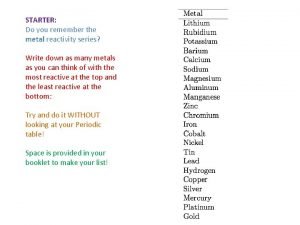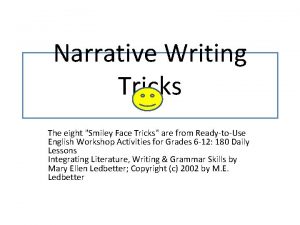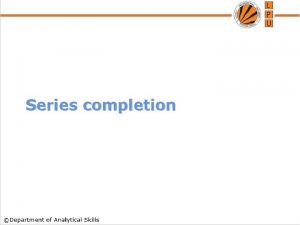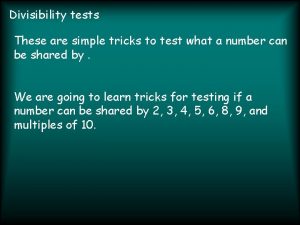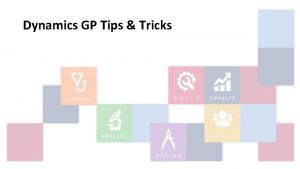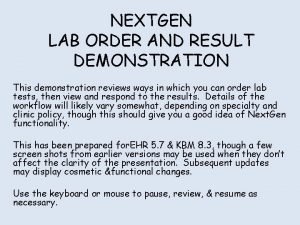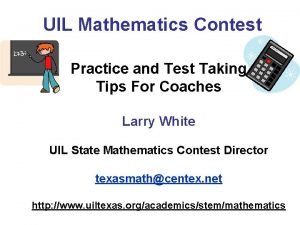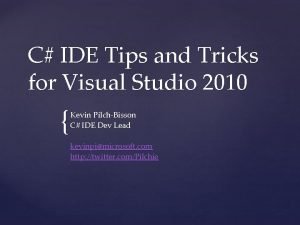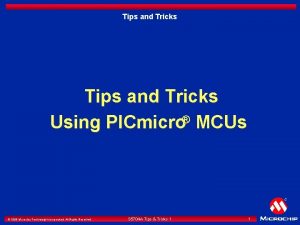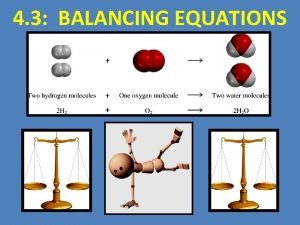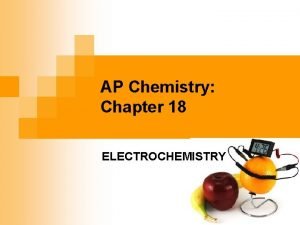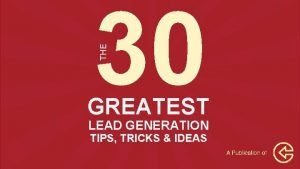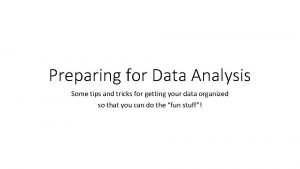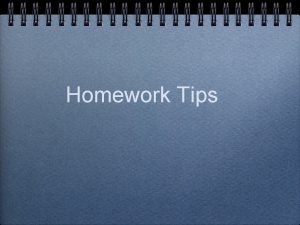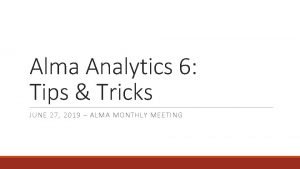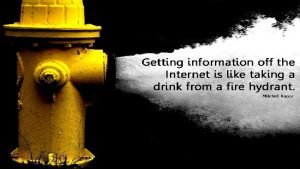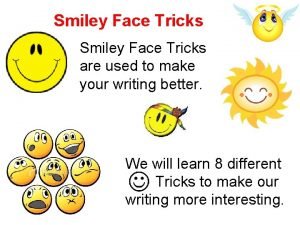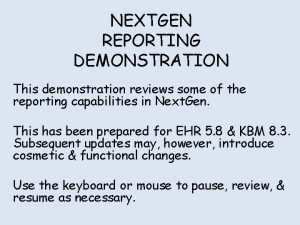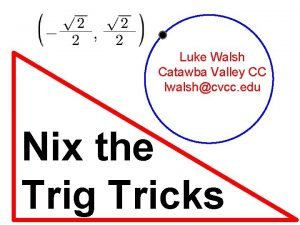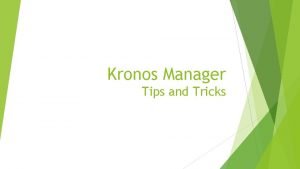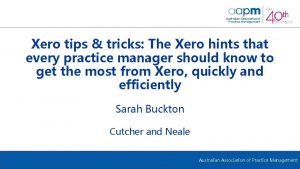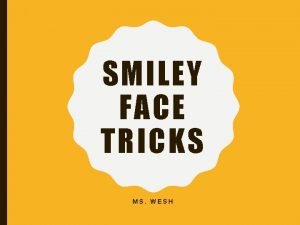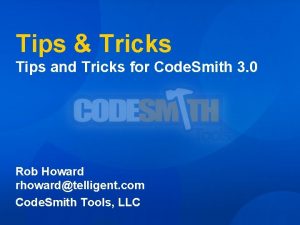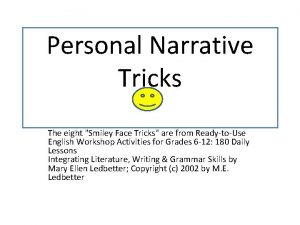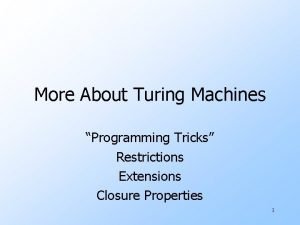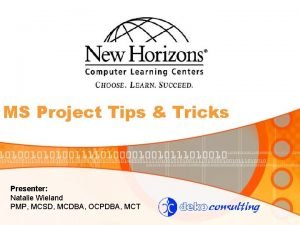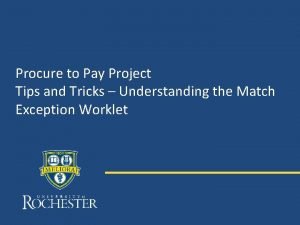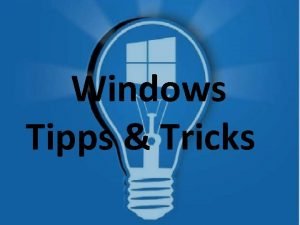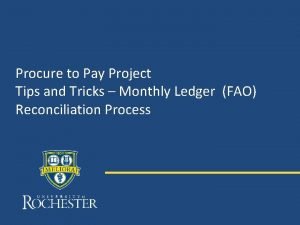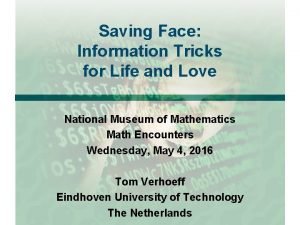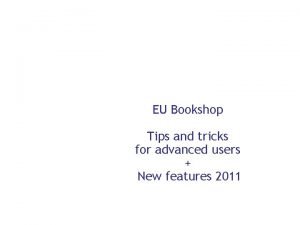What are Smileyface Tricks Smileyface tricks are a






























- Slides: 30

What are Smiley-face Tricks? Smiley-face tricks are a fun way to get you to think and write more creatively. “She was angry at her sister. ” becomes …… “She was so angry at her sister for not helping her with her math homework that she grabbed her sister’s geometry homework, crumpled it into a ball, and slam - dunked it in the trash!"

How does this relate to the NJ Holistic Rubric? By using smiley-face tricks, you’ll find yourself having fun while elaborating on your writing. Your teachers have always told you that you need to SHOW NOT TELL…. . WELL…. . Here is a FUN and CREATIVE way to do this and REAL authors use this and even better……. IT WORKS!


Magic Three examples in a series can create a poetic rhythm and add support for a point, especially when the three items have their own modifiers. Look at the example from The Paper Bag Princess by Robert Munsch. What three verbs & modifiers does the author use to add support?

Magic Three “Elizabeth was a beautiful princess. She lived in a castle and had expensive clothes. She was going to marry a prince named Ronald. Unfortunately, a dragon smashed her castle, burned all her clothes with his fiery breath, and Prince Ronald. (The Paper Bag Princess) carried off

TRY IT…. . Think of a problem you’ve had and write a simple sentence. NOW…. Add a Magic Three to your sentence and watch the “magic” happen! Possible starter: I was so angry that….

Figurative Language Non-literal comparisons add “zing” to our writing and can help paint a more vibrant picture for the reader. Some examples are similes, metaphors, hyperbole, onomatopoeia, personification, alliteration, assonance, etc.

Figurative Language “When the sky is full and singing with stars you know that twilight has given way. . ” Twilight Comes Twice by: Ralph Fletcher

TRY IT…. . Use one or more types of figurative language to rewrite the following sentence: The wind was strong. Challenge: Can you use a “Magic Three” AND figurative language to elaborate this sentence?

Humor Whenever possible and appropriate, try to infuse a little humor to keep your reader alert. I want you to wake up your readers’ emotions and what better way to attract attention than by using humor!

Hyphenated - Modifier � By connecting two or more adjectives together with a hyphen, it imparts an air of creativity and cleverness to our writing. � Sometimes a new way of saying something can make all the difference; hyphenated adjectives often cause the reader to “sit- up and take notice. ” “I give him Marcel’s special Turn-on-the-Charm -and Give-Them-the-Big-Pearly-Whites smile. ” All of the Above by Shelley Pearsall

TRY IT…. . There once was an old woman. OR He flashed her a wicked grin. Try elaborating either one of these sentences using either humor or a hyphenated-modifier. CHALLENGE: Can you use both smiley-face tricks in one sentence?

Quick Write Put Your Heads Together For the next couple of minutes try writing a paragraph using as many of the smiley-face tricks we talked about so far based on the following explanatory prompt. Work as a table group!

Repetition for Effect Repeat an important word, phrase etc. to stress its importance. Use this trick to get your readers’ attention. EXAMPLE: Today I wore a red hat, not just any red hat, the red hat from my grandma, not just any grandma, my grandma.

TRY IT……. Tell why Stanley was so unhappy using Repetition for Effect.

Example: Stanley was very unhappy, not just unhappy, but really, really unhappy, so unhappy that he was horribly unhappy.

Expanded Moment Take a moment that you would ordinarily speed past, and develop it fully to give your reader more details, to make that moment more life-like. Preparation: Write descriptive words for how a pillow feels – i. e. fluffy, puffy, billowy, cushiony, etc. Activity: What other imagery words can you add. Write down 5 words that describe the feeling of mud. Share and list on the board. Follow-up: How do the words convey the feeling of things.

Expanded Moment Preparation: Write words that evoke smells – i. e. popcorn, brownies, roses. Activity: Have students list other words that describe pleasant smells. Then have them list words to describe unpleasant smells (sour milk, garbage, rotten eggs, etc. ) Follow-up: Talk about how words can describe specific smells.

Dog at a Park � Sight: pink tongue, dark, almond-shaped eyes, small & brown animals, twitching ears � Touch: soft fur, heaving sides � Smell: soft wind blowing � Taste: � Sound: high-pitched sounds only dogs can hear Example of an expanded moment � “I watch Georgia run through Thompson Park… I am out of breath when I finally catch up with her. I run my hand along her back, soft as a feather pillow. I pat her heaving sides and scratch her ears, but she hardly acknowledges my presence. I command her to sit, and she does so, but her mind is elsewhere. Her ears twitch as she tunes in to the sounds that I cannot hear. Georgia strains to catch the slightest whisper in the air. Her pink tongue pulses from her lips. Her dark, almond-shaped eyes… are fixed on something small and brown. And then suddenly she is off, lickety-split, on another wild goose chase. ” (At the Park with Georgia)

TRY IT……. � Close your eyes. � Pretend you are in a boring language arts class and are daydreaming of someplace else you’d rather be. Become aware of your surroundings. � List your senses, then write an expanded moment using these senses. � � � Sight: Touch: Smell: Taste: Sound: First List Your Senses…. . Then, use your imagination….

Specific Details for Effect Every new word increases a writer’s power. Try to keep vocabulary natural. A thesaurus can be a good friend to a writer, but only if it is used sparingly and with thought. Writing works best with specific words that are carefully chosen to create a vivid picture in the reader’s mind. Play around with the words until they sound good. Don’t say, “The dog was big and mean. ” SHOW DON’T TELL! Say……. (Now you try it!)

“A hundred pounds of snarling yellow fur launched itself from the porch, straining at a rope thin as spaghetti. ”

Full-Circle Ending When writers include an image or phrase at the beginning of a piece of writing and then mention it again at the end, it gives their piece a sense of closure.

If you give a mouse a cookie, He’s going to ask for a glass of milk. When you give him the milk, he’ll probably ask you for a straw. When he’s finished, he’ll ask for a napkin. Then he will want to look in a mirror to make sure he doesn’t have a milk mustache. When he looks into the mirror, he might notice his hair needs a trim. So he will probably ask for a pair of nail scissors. When he’s finished giving himself a trim, he’ll want a broom to sweep up. He’ll start sweeping. He might get carried away and sweep every room in the house. He may even end up washing the floors as well! When he’s done, he’ll probably want to take a nap. You will have to fix a little box for him with a blanket and a pillow. He’ll crawl in, make himself comfortable and fluff the pillow a few times. He’ll probably ask you to read him a story. So you’ll read him one from one of your books, and he’ll ask to see the pictures. When he looks at the pictures, he’ll get so excited he’ll want to draw one of his own. He’ll ask for paper and crayons. He’ll draw a picture. When the picture is finished, he’ll want to sign his name with a pen. Then he’ll want to hang his picture on your refrigerator. Which means he will need…scotch tape. He’ll hang up his drawing and stand back to look at it. Looking at the refrigerator will remind him that he’s thirsty so…he’ll ask for a glass of milk. And chances are if he asks for a glass of milk, he’s going to want a cookie to go with it.

APPLICATION � “Eleven” by Sandra Cisneros � Work with your table group and see how many “smiley-face” tricks you can find! � Label � Be them in the margin ready to share.

OTHER METHODS OF ELABORATION � Action Verbs = “She was clutching tight to her daughter. ” � Adjectives = “Your skinny feet were devoured by oversized working boots. ” � Adverbs = “The sky whispered gloriously in unison. ” � Allusions = “It’s still vividly colored in my mind, like Georgia O’Keefe’s American abstract paintings. ” � Analogies = “Here comes real friendship, the real friend. Behind her is a caravan of white horses, each with a gold saddle on its back, waiting for us to pick one on which to ride back to her castle, a place with princess in shining armor and fairies on wings soaring at breath taking heights.

METHODS OF ELABORATION CONTINUED…. . � Anecdotes = “It seemed our family always had problems. Mommy always had “woman” problems, so she had to leave with some doctor. Daddy used to have a drinking problem. Mel’s Bar is really missing his business now. I wondered if we had missed any problems. ” “I remember those days…” � Definitions = He studied the “thing” as if he were a carrion-eating bird, a vulture…”

METHODS OF ELABORATION CONTINUED…. . � Descriptions = “He was an 83 -year old, myway-or-the-highway , beer-drinking, cigarsmoking, cowboy-hat-wearing man. ” � Dialogue = “I hear she’s anorexic. That’s how she dropped all that weight. ” � Quotations = “Someone said – I think it was Shakespeare – that friendship comes and friendship goes, but love lasts forever. ”

METHODS OF ELABORATION CONTINUED…. . � Reasons = “One of the main reasons that girls are different from boys is their appearance. It’s a commonly known fact that girls carry the contents of a survival kit and everything including the kitchen sink in their purses. ” � Sensory Images = “He takes her hand while asking her to dance. She blushes with a grin capable of reaching across the state of Texas and even farther. ”

� Keep these Smiley-Face Tricks in your binders/notebooks all year as a reminder of various stylistic devices. � Incorporate a certain number of Smiley-Face Tricks in each writing piece, . � Look for Smiley-Face tricks in your short stories/novels or independent reading books. � Make note of the ones you like and use them again and again in your writing!
 Antigentest åre
Antigentest åre Vmware tips and tricks
Vmware tips and tricks Remembering the reactivity series
Remembering the reactivity series Magic 3 writing examples
Magic 3 writing examples Ba_ba_bac_bac_acb_cbac
Ba_ba_bac_bac_acb_cbac Divisibility aptitude tricks
Divisibility aptitude tricks Accessibility tips and tricks
Accessibility tips and tricks Gp tips and tricks
Gp tips and tricks Nextgen orders
Nextgen orders Uil mathematics
Uil mathematics Gogle znalac
Gogle znalac Navision tips and tricks
Navision tips and tricks Visual studio 2010 tips and tricks
Visual studio 2010 tips and tricks Microchip tips and tricks
Microchip tips and tricks Tricks to balance chemical equations
Tricks to balance chemical equations Branding tips and tricks
Branding tips and tricks Ap chemistry electrochemistry
Ap chemistry electrochemistry The 30 greatest lead generation tips tricks & ideas
The 30 greatest lead generation tips tricks & ideas Data analysis tips and tricks
Data analysis tips and tricks Homework
Homework Alma analytics tips and tricks
Alma analytics tips and tricks Googlw tricks
Googlw tricks Magic 3 smiley face tricks examples
Magic 3 smiley face tricks examples Pseudolabeling
Pseudolabeling Nextgen crystal reports
Nextgen crystal reports Unit circle memorization tricks
Unit circle memorization tricks Robin hood tricks the sheriff
Robin hood tricks the sheriff Vacuum forming tips and tricks
Vacuum forming tips and tricks Kronos manager login
Kronos manager login Magento crud
Magento crud Xero tips and tricks
Xero tips and tricks


